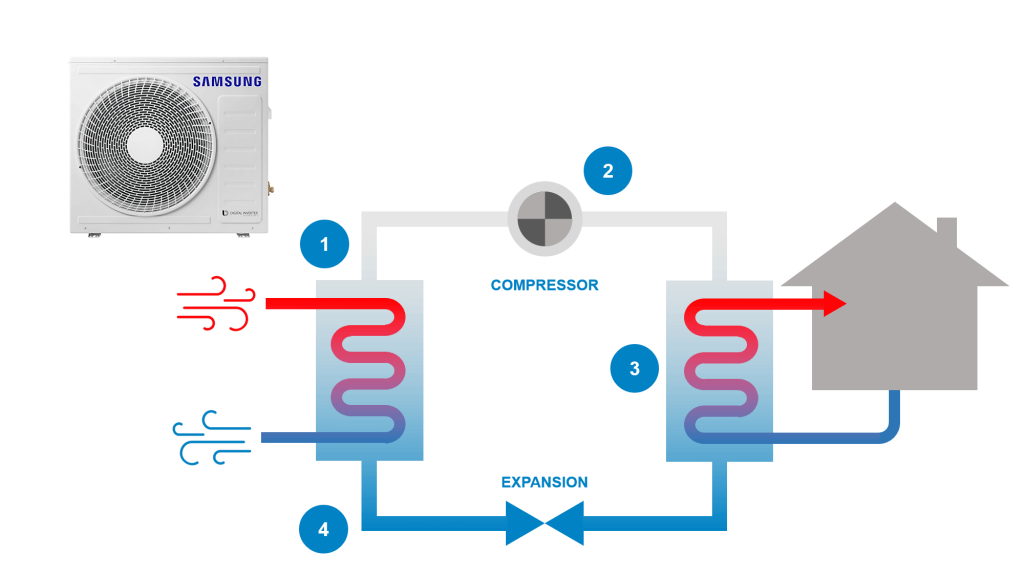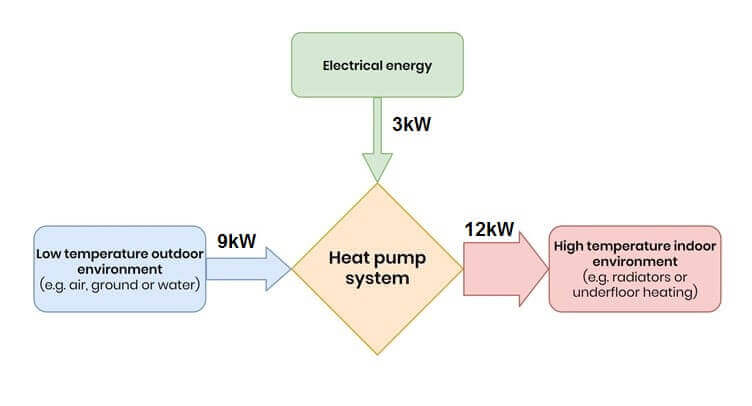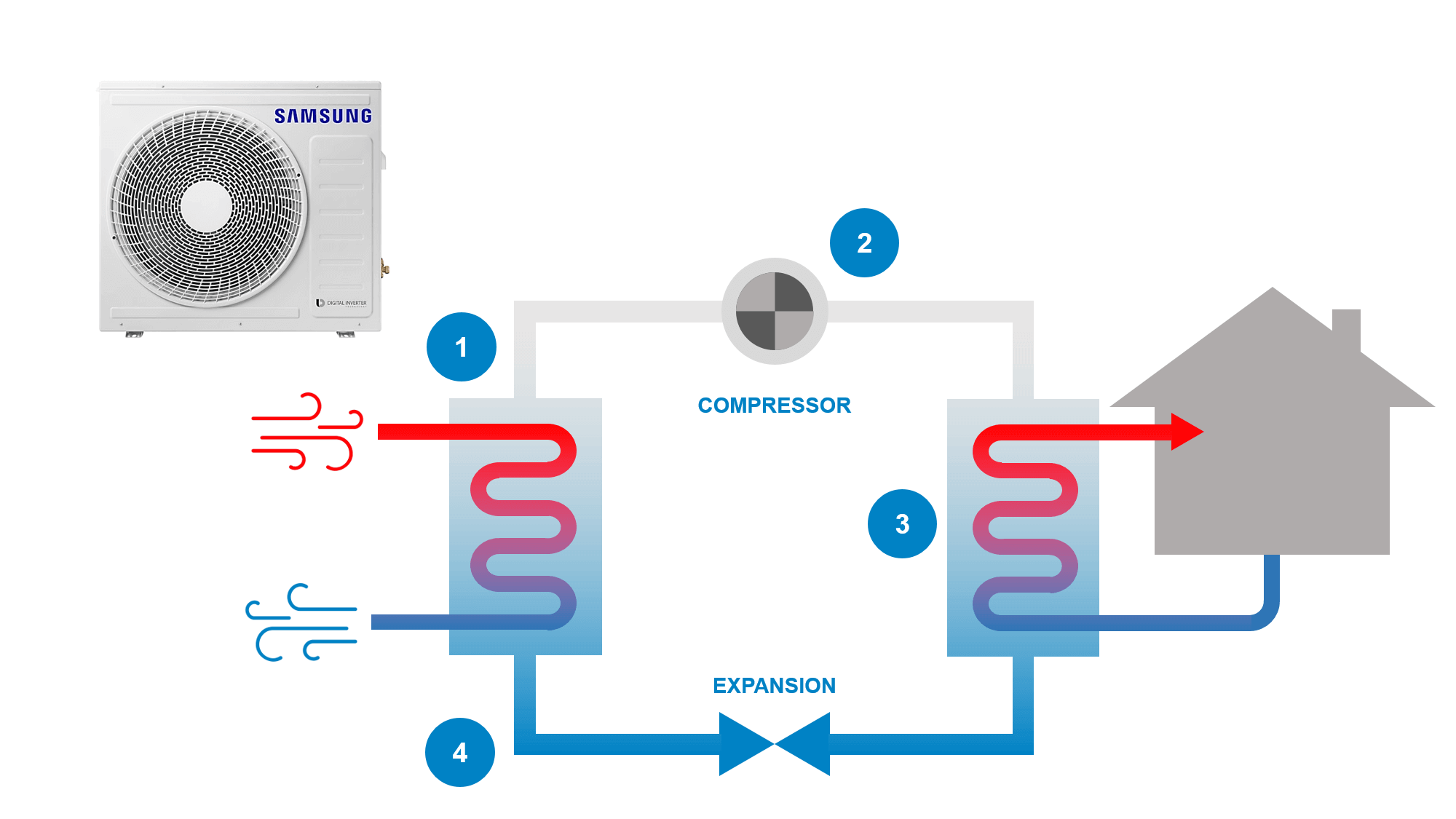With the rising costs of energy, heating homes and businesses is becoming more and more expensive. One way to reduce bills and be more environmentally friendly is by installing a heat pump to warm the air and water in a building.
Below we look at how air source heat pumps work and how they can save money in the long term as well as minimising your requirement for gas.
So called an air source heat pump (ASHP), because it pulls in air from outside, heat is transferred and distributed into the building – in its simplest terms, however the process is a bit more complicated than that.

On a more technical scale, the process is as follows:
- Air is drawn in from outside via a fan and passed through a heat exchanger. The heat from the air relative to the refrigerant running through it is higher and therefore heats the liquid past its boiling point so that it becomes a gas.
- The gas is then passed through a compressor. This increases the pressure and causes a rise in temperature.
- The heated refrigerant gas is then passed through another heat exchanger, where the heat is transferred to either air which is pumped straight into a building or the central heating system and / or hot water system.
- As the refrigerant loses its heat, it condenses and returns to a liquid state. As it does, it moves round the system to initial heat exchanger to begin the process again.
Heat pumps actually produce more heat than the amount of electricity they use. The amount of heat produced for every unit of electricity used is called Coefficient of Performance (CoP). So if a heat pump has a CoP of 3.0, it will emit three units of heat for every unit of electricity used.
Our team of experts can survey, design and install your cost-saving system within a matter of weeks. If you are interested in having an ASHP system installed in your home or business, then call our Climate Division team today on 01332 851300 or email [email protected] or visit www.tidycoclimatecontrol.co.uk for more information.

Sources:


Comments are closed